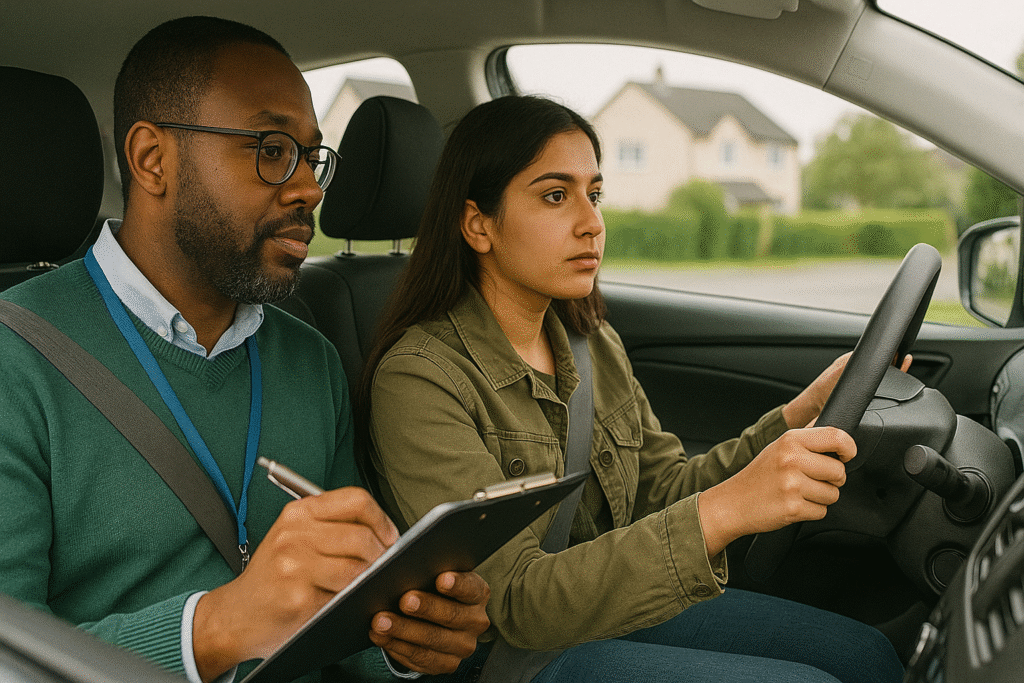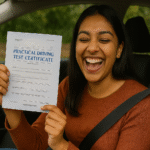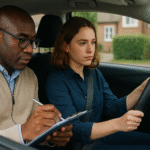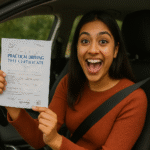Factors Influencing Your Chances of Passing the Practical Driving Test
Preparing for your practical driving test can be a nerve-wracking experience. Your chances of success depend on several critical factors combined with your preparation and mindset. Understanding these factors can help you establish a more focused study and practice schedule, boosting your confidence as you get behind the wheel.
Driving Experience
Your level of driving experience plays a significant role in your chances of passing the test. More time spent behind the wheel generally leads to better skills and confidence. Here are some key aspects to consider:
- Practice Hours: Aim for a minimum of 20-50 hours of driving practice before the test. This will allow you to cover various scenarios.
- Supervised Driving: Gain experience by driving with a qualified instructor or licensed adult. They can provide useful feedback.
- Diverse Conditions: Practice driving in different weather conditions and at different times of the day to build confidence.
Knowledge of Driving Rules
Knowledge is power when it comes to passing your practical driving test. Familiarize yourself with the driving rules specific to your region. Here’s what to focus on:
- Traffic Signs: Make sure you can identify and understand the meanings of various traffic signs.
- Road Signals: Know how to respond to traffic lights and pedestrian signals effectively.
- Right of Way: Understand who has the right of way in different driving situations.
Preparation and Practice
How you prepare for your test can greatly influence the outcome. Here’s a structured approach to prime yourself for success:
- Mock Tests: Take several mock driving tests to replicate the conditions you’ll face on the day. Many schools offer this as part of their training.
- Review Mistakes: After each practice session, review your errors. This reflection allows you to improve.
- Stay Informed: Changes in driving laws can occur, so make sure you’re updated on any new regulations.
Vehicle Familiarity
The car you use for the practical driving test can be a deciding factor. Here’s why familiarity is important:
- Controls and Features: Ensure you are comfortable with the car’s controls. Knowing how to use the wipers, lights, and signal indicators can help you focus on driving.
- Size and Handling: Practice in the vehicle you’ll take the test in. Different cars handle uniquely, and working with the same vehicle builds muscle memory.
Test Day Mindset
Your mindset on the day of the test can dramatically affect performance. Here are ways to cultivate a positive mindset:
- Stay Calm: Anxiety can hinder your performance. Use relaxation techniques such as deep breathing or visualization to stay centered.
- Positive Affirmations: Before the test, remind yourself of your preparation and ability. Positive self-talk can boost confidence.
- Arrive Early: Give yourself plenty of time to arrive at the test center. Rushing can add to stress.
Listening to the Examiner
During the test, clear communication with your examiner is crucial. Remember to:
- Follow Directions: Listen carefully to their instructions and follow them exactly as given.
- Ask Questions: If you don’t understand something, don’t hesitate to ask for clarification.
Post-Test Reflection
Regardless of the outcome, reflect on your test experience afterward. Consider the following:
- Feedback: Take note of the examiner’s feedback to identify areas for improvement.
- Future Practice: If necessary, continue practicing until you feel entirely confident.
Your road to passing your practical driving test is paved with preparation and understanding. Focus on gaining experience, mastering the rules, and nurturing a positive mindset. With dedication and practice, you will maximize your chances of success when you ask yourself, “Will I pass my practical driving test?”
Common Mistakes to Avoid During a Practical Driving Test
Preparing for your practical driving test can be both exciting and nerve-wracking. Understanding what common mistakes to avoid can significantly enhance your chances of passing. Here are some prevalent errors that candidates often make during their driving tests, alongside tips to help you steer clear of them.
Basic Control Mistakes
Mastering the basic controls of your vehicle is crucial for a successful test. Familiarize yourself with how to operate your car smoothly.
- Improper Use of Controls: Ensure that you know how to use indicators, wipers, and lights appropriately. Forgetting to signal can lead to immediate failure.
- Poor Gear Changes: Make sure to shift gears smoothly and at the correct RPM. Jerky gear changes can be distracting to the examiner.
- Excessive Speeding or Driving Too Slowly: Maintain a steady speed as per the limits of the road. Being too fast or too slow can draw negative attention.
Lack of Awareness
Awareness of your environment is vital when driving. Test examiners assess how you engage with the road and other drivers.
- Ignoring Road Signs: Pay close attention to road signs, as missing them could lead you into dangerous situations.
- Not Checking Mirrors: Regularly check your mirrors to stay aware of your surroundings. Neglecting to do so can cause dangerous situations.
- Failure to Look Both Ways: Always look both ways before entering intersections or when changing lanes to ensure safety.
Incorrect Maneuvers
Incorrect execution of maneuvers can heavily impact your score during the practical driving test. Here are some common pitfalls:
- Improper Turns: Ensure you understand how to negotiate turns correctly, using the appropriate lanes and signaling in advance.
- Inadequate Parking Skills: Practice different parking techniques, including parallel, angle, and perpendicular parking to demonstrate your versatility.
- Failure to Yield: Always yield to pedestrians and cyclists. Neglecting this can result in a failed test.
Driving Behavior
Your behavior behind the wheel speaks volumes during the test. Each action you take contributes to your overall impression.
- Being Overly Cautious: While caution is important, overdoing it can lead to hesitation and confusion for other drivers.
- Excessive Talking: Focus entirely on driving and minimize distractions. Engaging in unnecessary conversation or fidgeting can lead to mistakes.
- Not Staying Calm: Nerves can affect your performance. Practice relaxation techniques to keep stress at bay.
Test Day Preparedness
Fatal last-minute mistakes can derail your chances. Preparation is key when showing up for your practical driving test.
- Inadequate Vehicle Inspection: Inspect your vehicle before the test. Ensure everything is functioning correctly, from lights to brakes.
- Neglecting Necessary Documentation: Always bring your driving permit, proof of insurance, and any required documents.
- Arriving Late: Allow ample time to reach your test location to avoid unnecessary stress.
By understanding these common pitfalls and preparing adequately, you can navigate your driving test with confidence. Remember, practice consistently and remain focused on the task at hand. With each outing, you’ll become a more reliable and safe driver. Embrace the challenge, avoid these errors, and you’ll be well on your way to passing your practical driving test.
Tips for Building Confidence Before Your Driving Test
Feeling nervous before your practical driving test is completely normal. Many people worry about whether they will pass their practical driving test, but there are effective ways to build your confidence. Here are some tips to help you prepare and feel more assured on the day of your test.
Practice, Practice, Practice
The more you practice driving, the more comfortable you will become behind the wheel. Here are some suggestions to maximize your practice:
- Regular Driving Sessions: Aim for frequent driving sessions with a qualified instructor. Consistency is key.
- Diverse Conditions: Practice in different weather conditions and at various times of the day to get used to handling different situations.
- Mock Tests: Organize mock tests with your instructor or a trusted friend. This will simulate the test environment and help you adjust to the pressure.
Know the Test Route
Familiarizing yourself with the test route can significantly lessen your anxiety. Here’s how to go about it:
- Visit the Area: Drive around the test area a few times to become comfortable with the roads, traffic signs, and common challenges.
- Learn the Crucial Points: Identify key areas that your examiner may focus on or where mistakes are common.
Visualize Success
Visualization is a powerful tool. Take some time to imagine yourself confidently driving during the test. Picture successfully completing each task the examiner will ask of you. Here’s how to make visualization effective:
- Close Your Eyes: Sit quietly, close your eyes, and envision the test in detail—from arriving at the testing center to passing the driving test.
- Positive Affirmations: Use positive affirmations. Tell yourself phrases like, “I am a capable driver” or “I will pass my driving test” to boost your confidence.
Stay Informed About Common Pitfalls
Understanding what can lead to a failed test will help you prepare better. Here are common reasons why people do not pass their practical driving test:
| Common Pitfall | Tip to Avoid |
|---|---|
| Not Observing Properly | Make a habit of checking mirrors and blind spots consistently. |
| Speeding or Driving Too Slowly | Familiarize yourself with speed limits and adjust your speed accordingly. |
| Poor Control of the Vehicle | Practice maintaining a steady speed and handling turns with confidence. |
| Failing to Signal | Remember to use your signals for every turn or lane change. |
Manage Your Anxiety
Anxiety can play a significant role in how you feel before your test. Here’s how you can manage it:
- Breathing Exercises: Simple deep breathing techniques can help calm your nerves. Inhale deeply for four counts, hold for four, and exhale for four.
- Healthy Lifestyle: Ensure you eat nutritious foods and stay hydrated. Your body will function better with proper fuel.
- Get Enough Sleep: A good night’s rest before your test can significantly affect your alertness and reaction time.
Arrive Early
On the day of your test, aim to arrive early. This will give you time to settle and gather your thoughts before the test begins. Arriving early also allows you to familiarize yourself with the testing environment, helping to ease your nerves.
Trust Your Instructor
Place your trust in your driving instructor. They have experience in training students and understand what is required to pass the driving test. If your instructor believes you’re ready, it’s likely you are!
By following these steps, you can enhance your confidence and increase your chances of passing your practical driving test. Remember to stay positive and believe in your abilities. Good luck!
Understanding the Practical Driving Test Structure and Requirements
Understanding the practical driving test is essential for anyone eager to earn their driver’s license. This test assesses your ability to operate a vehicle safely and responsibly. Being aware of the structure and requirements can greatly boost your confidence as you prepare. Let’s break down the key elements of the practical driving test.
Structure of the Practical Driving Test
The practical driving test typically comprises several key components, each designed to assess different aspects of your driving abilities. These include:
- Pre-Drive Checks: Before you begin your drive, the examiner may ask you to perform a series of checks on the vehicle. This could include inspecting mirrors, seat adjustments, and learning how to operate essential controls such as headlights and wipers.
- Basic Vehicle Control: During this section, you will demonstrate your ability to manage the vehicle’s controls. This involves starting, stopping, steering, and applying the brakes smoothly.
- Road Driving: You will then be taken on a road route where the examiner will observe your driving behavior in real traffic conditions. This section tests your ability to follow road signs, obey traffic rules, and maintain safe distances from other road users.
- Manoeuvres: You will also be required to perform certain maneuvers such as parallel parking, three-point turns, and reversing around a corner. These skills are crucial for everyday driving.
- Emergency Stops: The examiner may instruct you to make an emergency stop to assess your reaction to sudden situations.
Requirements to Take the Practical Driving Test
Before you can take the practical driving test, you need to meet certain requirements. Here’s what you need to fulfill:
- Age: You must be at least 17 years old in most places, though this age may vary. Check local laws for specifics.
- Learner’s Permit: You must hold a valid learner’s permit or provisional license. This usually requires completing a specific amount of driving hours under supervision.
- Driving Lessons: Although not mandatory, it’s highly recommended to take professional driving lessons before attempting the test. An instructor can prepare you with the skills and knowledge you need.
- Practice: Depending on your region, a certain number of practice hours may be required, typically around 20-50 hours of logged driving experience.
Additional Tips for Success
Passing the practical driving test requires preparation and understanding of the test format. Here are some additional tips to help you prepare:
- Know the Route: Familiarize yourself with the driving test routes in your area. This can help reduce anxiety on test day.
- Practice Maneuvers: Regularly practice different maneuvers with a licensed driver, such as your trainer or a family member. These skills are crucial for the exam.
- Stay Calm: Exam nerves are normal. Focus on your driving and follow your training. Deep breathing and positive affirmations can also help ease anxiety.
- Listen to Your Examiner: During the test, pay close attention to your examiner’s instructions. If you’re unsure, it’s okay to ask for clarification.
Common Mistakes to Avoid
Being aware of common mistakes can help you prepare better. Here are some issues that often lead to failing the practical driving test:
- Not checking mirrors frequently, which can lead to unsafe driving when changing lanes or making turns.
- Failing to signal before turning or changing lanes.
- Driving too close to the curb or other vehicles.
- Handling the vehicle in a tense or overly cautious way.
- Ignoring traffic signals and road signs.
Understanding the structure and requirements of the practical driving test can set you up for success. With adequate preparation, a calm mindset, and practice, you increase your chances of passing your driving test on the first try. Remember to focus on safe driving, obey all rules, and follow the examiner’s instructions to achieve your goal of becoming a licensed driver.
How to Prepare Effectively for Your Practical Driving Test
Passing your practical driving test is a significant milestone on your journey to becoming a licensed driver. With the right preparation, you can boost your confidence and increase your chances of success. Here are some effective strategies to help you get ready for your big day.
Understand the Driving Test Structure
To prepare thoroughly, familiarize yourself with what the practical driving test entails. Knowing what to expect can ease any anxiety you may have. The test typically includes the following components:
- Vehicle Check: You may be asked to demonstrate knowledge of basic vehicle maintenance.
- Driving Maneuvers: Expect to perform specific maneuvers, such as parallel parking, reversing around a corner, and emergency stops.
- Road Driving: The examiner will evaluate your ability to drive safely in various traffic conditions and adhere to road signs.
Practice Regularly with a Qualified Instructor
Consistent practice is key. Schedule lessons with a qualified instructor who can guide you on the skills needed for the test. During your sessions:
- Focus on areas that you’re less confident in.
- Use a vehicle similar to the one you’ll take for the test.
- Ask your instructor for constructive feedback.
Develop a Study Plan
Creating a study plan can help manage your time effectively. Here’s a simple approach:
| Day | Focus Areas |
|---|---|
| Monday | Vehicle controls and checks |
| Tuesday | Practice driving maneuvers |
| Wednesday | Road driving in various conditions |
| Thursday | Mock driving test with instructor |
| Friday | Review and practice weak areas |
Know the Road Rules and Regulations
Driving is not just about handling the vehicle; it’s also about understanding the road rules. Make sure you:
- Familiarize yourself with local traffic laws.
- Understand the meanings of different road signs.
- Practice defensive driving techniques.
Manage Your Anxiety
Nerves are common before any test. To help manage anxiety:
- Practice relaxation techniques, such as deep breathing.
- Visualize a successful driving test.
- Engage in light exercise to relieve tension.
Take Time to Rest Before the Test
Don’t overlook the importance of rest. Being well-rested can enhance focus and performance. The night before your test:
- Avoid heavy meals that might disrupt sleep.
- Limit screen time to promote relaxation.
- Get a good night’s sleep, aiming for 7-8 hours.
Dress Comfortably
On the day of your practical driving test, choose comfortable clothing. This can help you feel at ease while driving. Also, remember to wear appropriate footwear. Footwear that allows you to feel the pedals properly, such as flat shoes, is ideal.
Be Punctual and Prepared
Arrive at the testing location early. This gives you time to calm your nerves, check the vehicle, and gather your thoughts. Before stepping into the car, ensure you have the following:
- Your provisional driving license
- The vehicle is insured and roadworthy
- Knowledge of the examiner’s requirements
As you prepare for your practical driving test, remember that each component plays a crucial role in your overall readiness. By understanding the test structure, practicing regularly, managing anxiety, and ensuring you arrive prepared, you increase your chances of success. You’re not just aiming to pass the test; you’re preparing for a lifelong skill that ensures safety for you and others on the road. Good luck!
Key Takeaway:
When it comes to the question "Will I pass my practical driving test?", several key factors can determine your success. Understanding these elements is crucial for any learner driver aiming to obtain their driving license.
First and foremost, the factors influencing your chances of passing the practical driving test cannot be overlooked. Your experience behind the wheel, your ability to follow traffic rules, and your knowledge of the vehicle’s controls play significant roles. Because practical driving tests assess how well you can operate a vehicle safely, being well-prepared is essential.
Next, avoiding common mistakes can greatly enhance your likelihood of success. Many candidates fail due to simple errors such as incorrect signaling, failing to check mirrors frequently, or making unsafe maneuvers. Familiarizing yourself with these common pitfalls can help you steer clear of them during your test.
Building your confidence is another critical aspect of preparing for your practical driving test. Nerves can easily affect your performance, so implementing strategies like practicing relaxation techniques or driving with friends and family can be beneficial. Feeling relaxed and sure of yourself can lead to better decision-making on the road.
Understanding the structure and requirements of the test itself is equally important. Knowing what to expect can reduce anxiety and allow you to focus on demonstrating your driving skills. Familiarize yourself with the specific tasks you’ll need to complete, such as parallel parking, three-point turns, and obeying traffic signals. This preparation gives you a clearer roadmap for success.
Effective preparation is key to passing your practical driving test. Engage in different driving scenarios and conditions to bolster your experience. You might also consider taking a few lessons with a qualified instructor who can provide valuable insights into your driving abilities and areas for improvement.
Passing your practical driving test is well within reach if you understand the factors that influence success, avoid common mistakes, build confidence, comprehend the test structure, and prepare effectively. By focusing on these strategies, you can significantly increase your chances of obtaining that coveted driving license.
Conclusion
Passing your practical driving test hinges on a variety of factors, each playing a crucial role in your overall success. Understanding these factors, such as your driving skills, familiarity with the test route, and the weather conditions on test day, can significantly influence your chances of obtaining that coveted driving license.
Avoiding common mistakes during the test is essential for achieving a passing score. Simple errors like failing to check mirrors or misunderstanding road signs can jeopardize your performance. By being mindful of these mistakes, you can better position yourself for success.
Building confidence before your driving test is equally important. Engaging in practice sessions, visualizing success, and maintaining a positive mindset can all contribute to a more relaxed and focused test experience. Remember that being well-prepared boosts your confidence and helps ease any pre-test anxiety.
Understanding the structure and requirements of the practical driving test allows you to navigate the evaluation process with clarity. Familiarizing yourself with what to expect on test day can alleviate unnecessary stress and help you focus on your driving.
Effective preparation is key. Utilize a combination of practice driving, using driving simulation tools, and seeking feedback from qualified instructors. Prioritize your rehearsal to ensure you are ready when the day of your practical driving test arrives.
By combining these insights and strategies, you’re setting yourself up for success. Armed with knowledge, practice, and self-assurance, you’ll increase your chances of passing your practical driving test. Good luck, and remember that each step you take brings you closer to driving with confidence on your own!






Leave a Reply